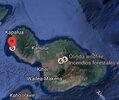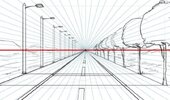Maui Fire - Greg Reese: "Residents in the area have reported flashes of light. One was caught on security camera and appears to have been the starting point of the Olinda fire. people say they are directed energy weapons."
Here are links to the video:
MBCC fire - security cam footage
Posted by Sandiego Wildlife Alliance, quite good quality video.
The clip is also on this news video
ABC NEWS
0:56 / 3:22
Security video appears to show what triggered deadly Maui fire l GMA
If you download, I took the Vimeo, in the highest available quality and slowed it down on VLC.
The is
I just had a neat demonstration of the following earlier today: (L) Anything else from anybody? A: Be aware that you are currently under attack by forces that wish to silence you and end your exertions on behalf of your group in specific and the planet in general. These forces are getting...

cassiopaea.org
The video is like an explosion, and why does the camera go out of focus and comes back.
In this post, there is more about anomalies surrounding planes:
The last frame, I could find with VLC using the e shortcut for frame to frame.
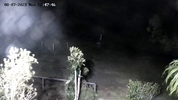
There are two frame that show a little light, and something white to the left of it and one spot down to the right of it.

And:
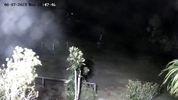
But then

And even brighter:

A little less:
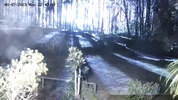
That was the last frame of that series.
Three minutes and 18 seconds later later, the camera takes its first frame after coming back on. It was pointing down and not yet focused:

Four seconds later the camera is refocused and directed in the same direction:
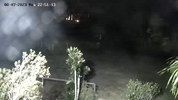
The area by day, the next morning:
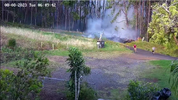
The explanation from the people operating the camera:
Video Captures Possible First Flames of the Maui Wildfires as Tree Falls on Power Line
One official called it 'strong confirmation that utility grid faults' were likely the cause of multiple blazes in Hawaii
Published 08/16/23 10:45 AM ET|Updated 08/17/23 11:03 AM ET
Dan Gooding
Abird sanctuary in Maui has shared potential video evidence of the beginning of one of the region's devastating wildfires, showing a falling tree striking a power line.
The security camera footage from the Maui Bird Conservation Center, taken just before 11 p.m. on Aug. 7 shows strong winds before a bright flash in the woods outside.
Jennifer Pribble, a senior research coordinator at the center, spoke about the moment
in a video posted on Hawaii's Department of Land Natural Resources Instagram account.
“The power goes out, our generator kicks in, the camera comes back online, and then the forest is on fire," she said in the video.
[Instagram embedded]
At that moment, a "significant incident" in the power grid was reported in the nearby town of Makawao.
The Washington Post reported that the flash in the video was likely the result of sparks coming from the power line as it hit vegetation.
About the causes, the video raises question, because what is the little light visible in two frames just before the big flash of light that persist for three frame growing and waning before the camera dies. If the idea of a power line hit by a tree, is there even a power line in that dense corner of the woods? A natural cause, does not excluse other actions were taken to help it along.
In the transcripts, there are passages about highly charged meteor fragments that cause problems.
Fertilizer explosion caused by "Information overload in the form of a small comet fragment with a massive electrical charge."
In the next excerpt, the Cs say "Once again you must think in terms of information and electrical charge"
Fires out of place and season can be caused by gas emissions combined with active plasmas
In earlier post,
this see "Greater current flow sparked gas explosion within the Earth" and "Series of bombings in China - partly sabotage and partly natural", there were comments on gas explosions. Here is another case:
Session 22 March 2014
In the case of this location, I don't understand why there would be gas emissions, so what does it leave us with? Dry wood is flammable too.

 I assume is the same.
I assume is the same. ![lg_fire_nifc_2023-08-01[1].png lg_fire_nifc_2023-08-01[1].png](https://cassiopaea.org/forum/data/attachments/63/63285-f6a49a7150660cd91ff70483f17640b1.jpg)











